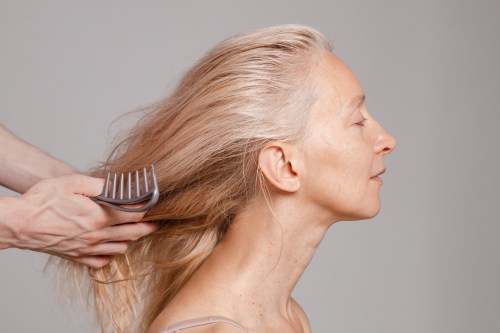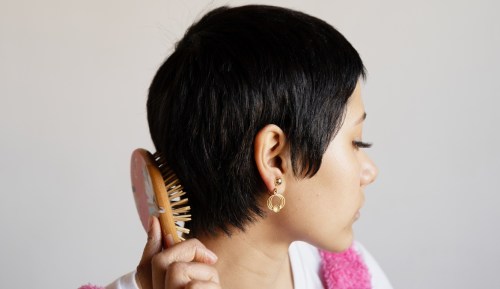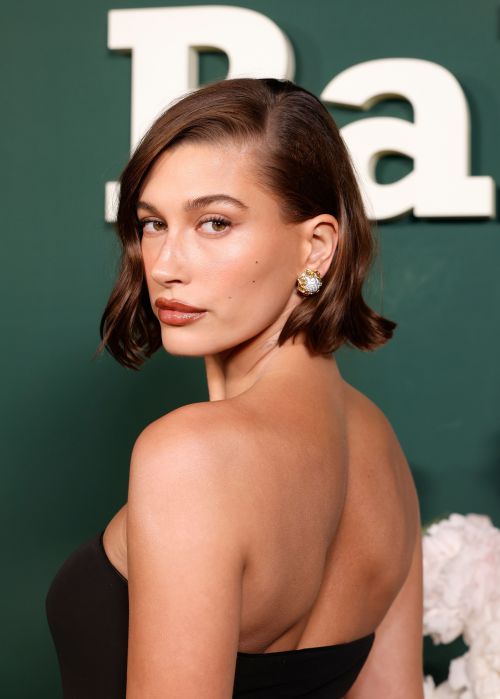Having turned 30, I’m beginning to hear more and more of my friends talk about the fact that they’re starting to get their first gray hairs. I try to be empathetic, but it’s really hard—because I can’t even remember a time when the gray hairs haven’t been sprouting from my head. It’s been that long.
At first—as a teenager already filled with angst—I wondered why I was dealing with a beauty issue that’s usually reserved for a few decades later. But what started as a minor petulance (a few silver strands here and there) became a perpetual annoyance and enemy of my wallet. Not only that, but my relatively early experience with gray hair didn’t just impact my beauty regimen, it also took a knock at my self-esteem.
I started spending hours in the salon chair every four-to-six weeks on the dot. And while I know that more-and-more young women are embracing their gray hair now, I still feel my most confident when mine is a cool-toned dark brown. So, I went straight to a dermatologist to find out why gray hair happens for people at such varying ages and the best ways to address it. For clarity (and perhaps some justified comfort), here’s why some people have to deal with grays before others ever do.
Why gray hairs happen
Early on, my parents accepted the blame for my whitened strands, and they were right to do so: The matter of when you go gray is mainly dependent upon your family tree. “Gray hair is largely determined by genetics,” Francesca Fusco, MD, a dermatologist from Wexler Dermatology explains. “IRF4 is the name of the gene that governs the production and storage of melanin, which is pigment. If you have a family history of early graying, you too may gray early.” Yep.
As with developing fine lines and losing bone density, decreased pigment in your hair is also a thing that happens as you rack up candles on the birthday cake. “Gray hairs happen as a result of decreased melanin production, which occurs as you age,” says Dhaval Bhanusali, MD, FAAD, a New York-based dermatologist. “Hair usually starts as gray and ends up white when no more pigment is produced.”
You could develop gray hair sooner despite your genetics, though, due to several factors. “Vitilago, an autoimmune condition where pigment is destroyed, a B12 deficiency, and pituitary or thyroid problems may also cause graying,” says Dr. Fusco. “But they’re not very common. And the latter two are reversible with treatment.”
Besides that, there are lifestyle behaviors that can lighten your strands as well. “There have been studies showing that things that damage hair, like smoking, can increase the speed at which hair grays,” adds Dr. Bhanusali. “Other associations include increased stress and a condition called alopecia areata where your body can attack hair follicles.” While you can make certain changes—like quitting smoking and limiting stress and eating well—nothing’s going to prevent your hair from ultimately going gray. So if you want to cover it up, keep scrolling.
How to cover gray hairs up
The good news is that you can take the situation into your own hands, or leave it to the professionals. “When it comes to covering grays, it’s a very case-by-case deal,” says Danielle Lint, head colorist at Warren Tricomi salon in New York. “My advice for clients interested in covering grays would be to keep the color close to your natural color for less maintenance, and also to not let your gray roots get too long in between colors. When picking a color, if you can’t find the perfect match, pick a color that’s slightly darker.” Also, avoid toxic ingredients just as you do with your skin care. “Avoid hair color that has ammonia, PPD, Resorcinol, parabens, phthalates, or gluten,” says David Stanko, vice president of technical design and education and master colorist at Madison Reed (a brand that makes better-for-you hair dyes).
It helps to look at undertones too. “If you were a natural brunette whose hair got auburn tones from the sun, a warm chocolate is a good hair color of choice for you,” says Stanko. “If your hair was super dark and always stayed that way, it’s likely that a rich, cool brunette will be suitable.” And vice versa with reds and blondes: Check up on the undertone which can make it way easier to handle maintenance down the road. An easy golden rule to follow is to look at your natural hue and stay within two shades of it.
The timing between dyes, according to Lint, is roughly every four to six weeks. If you’re stretching that time gap pretty thin, however, there are methods to cover your gray roots in the meantime. “There are lots of products, such as powder or makeup, that cover your gray and then wash out when shampooed,” says Lint. “It doesn’t change your color or damage your hair. I suggest a powder spray by L’Oréal Professional.” There’s also Root Reboot by Madison Reed, a semi-permanent color that blends your roots for about two weeks before it gently fades off in tone, and Root Touch Up which is a brush-on micro-milled powder that’s like makeup for your hair. What I’m saying is: There are plenty of ways to keep the gray away if you’re not up for fully embracing it just yet.
Also, this is how to build a skin-care routine in your 30s. And here’s what to know about perioral dermatitis, AKA that never-ending breakout on your chin.
Sign Up for Our Daily Newsletter
Get all the latest in wellness, trends, food, fitness, beauty, and more delivered right to your inbox.
Got it, you've been added to our email list.











